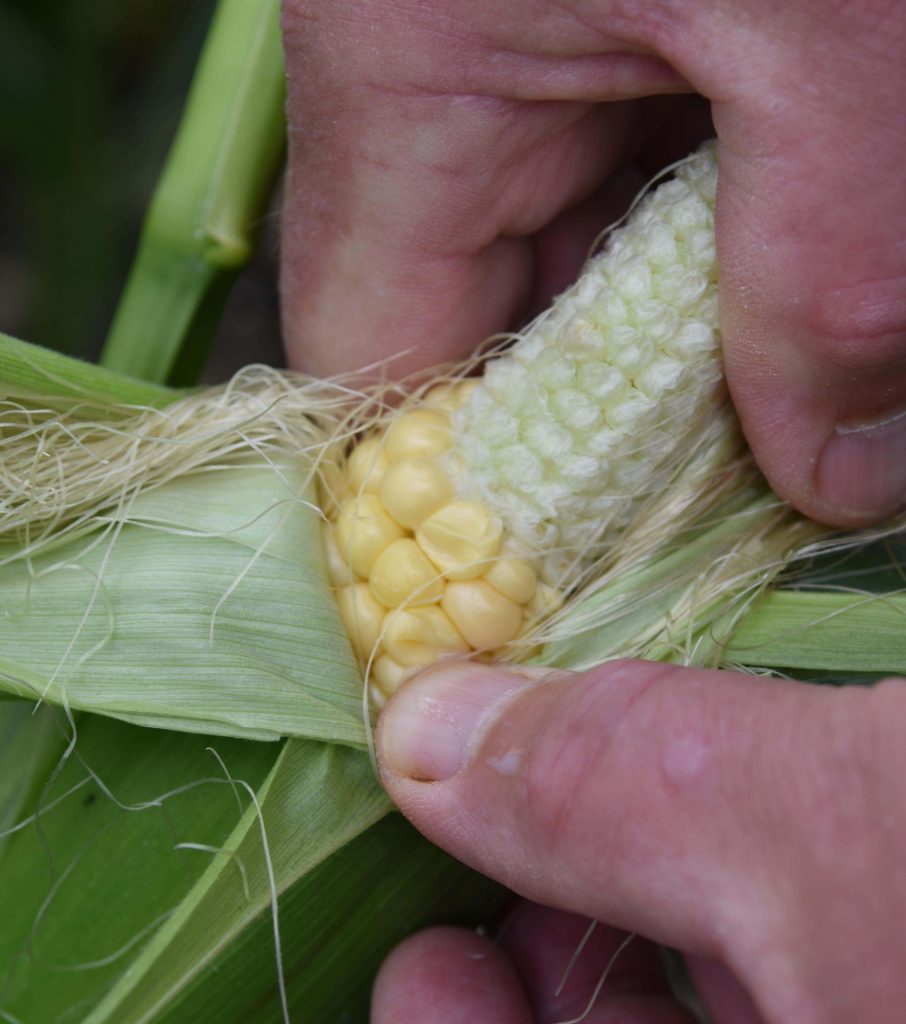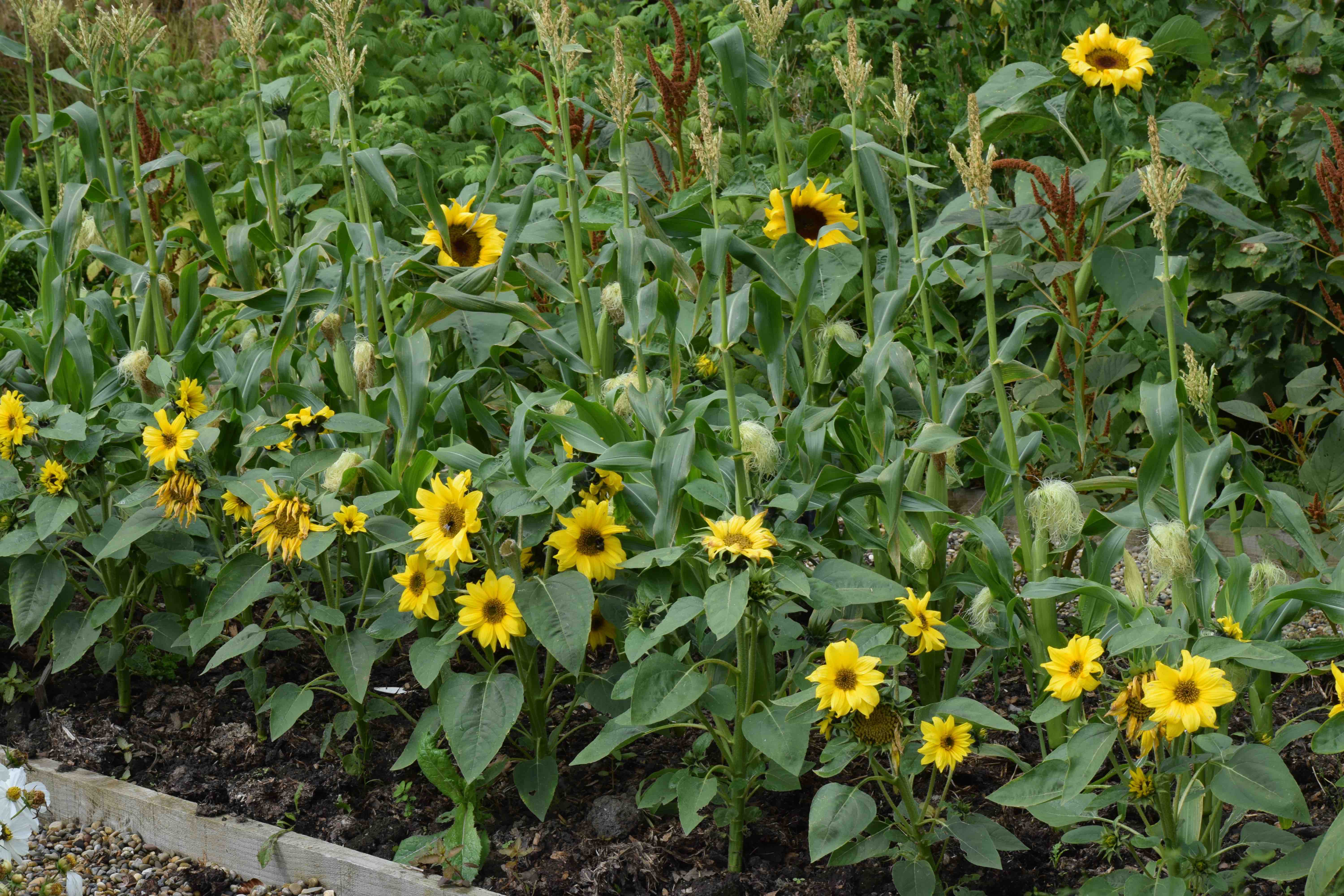
With the weather looking like it is going to improve in the next week it is time to think about summer crops.
I was a late convert to the true delights of sweetcorn. I must have been 30 when I was visiting an old gardener (well he was about the age I am now!) on his allotment in Enfield and he offered me a raw cob of sweetcorn, snapped off the plant, and told me to eat it. I was shocked. Surely you couldn’t eat it raw! But one bite and I was hooked. Most of my homegrown sweetcorn now never gets near the kitchen and we devour it warmed by the sun – no butter needed.
Sweetcorn is not a crop I can wholeheartedly recommend for a small plot. The plants are quite attractive but they are big. And each plant will only produce one or two cobs. You could grow one sweetcorn plant in a 30cm pot but that makes it expensive. And there is another issue.
Pollination
Sweetcorn is a grass but a very unusual one. The cobs (female flowers) are produced up the main stem and the male flowers, that shed pollen that has to reach the females, are produced at the top of the plant when it has completed growth. Because the movement of the falling pollen is haphazard it is always recommended that sweetcorn is planted in blocks. The plants in the centre of a block of plants will be well-pollinated but those at the edges may not be as good. This is an issue because the immature, ‘flowering stage’ cobs produce ‘silks’ and each ‘thread’ leads to an individual kernel on the cob. Every one has to ‘catch’ a pollen grain.
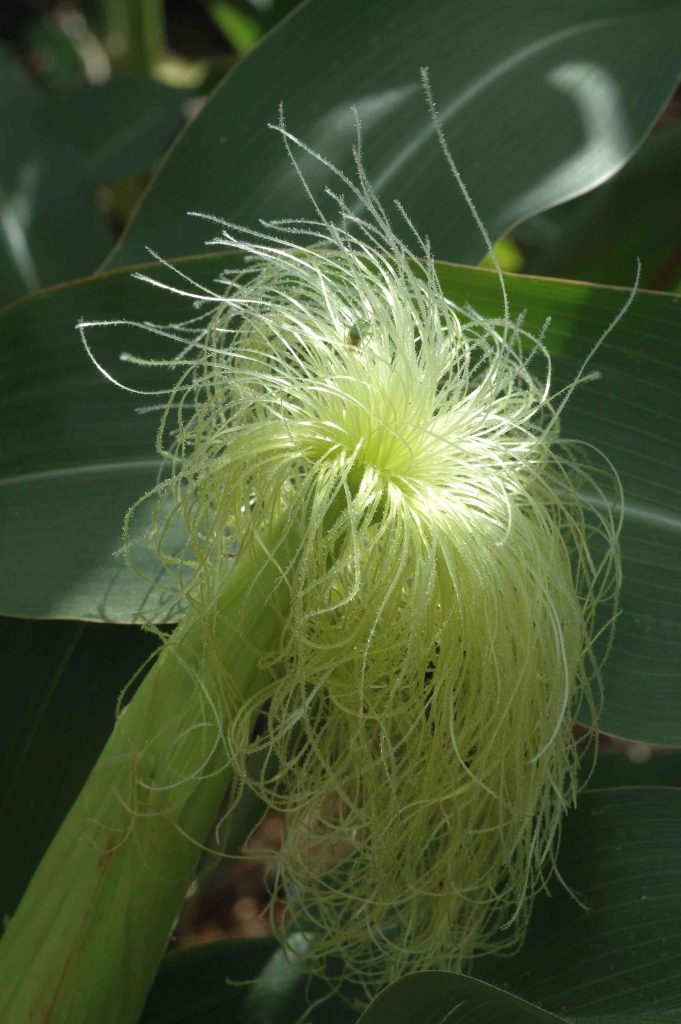
A pollen grain has to land on every silk to produce a fully formed cob. If the cob has lots of gaps it is because of uneven pollination.
So how many plants should you grow? I would say a block of 4×4 (16) is the absolute minimum – only 4 plants will be in the middle. A block of 5×5 is much better, with 9 plants in the centre of the block. The more, the merrier. Just try to avoid planting in rows.
I don’t leave things to chance though and when the male flowers are dropping pollen I shake the plants and even pick off some and shake them over the silks below. This is not practical if you have loads of plants but useful if you only have a few plants.
So where to start?
Sweetcorn is not fussy about soil but you should always improve any soil before growing a crop, getting rid of weeds and forking in some organic matter. Sweetcorn prefers a sheltered spot and loves sunshine. Sweetcorn plants can’t withstand frost so we plant them out in mid May and now is the perfect time to start seeds.
Sweetcorn has a reputation for being difficult to grow or needing better summers than we can provide but things have changed. For the best chance of crisp, sugar-sweet cobs, buy F1 hybrid varieties. I usually grow ‘Lark’ or ‘Swift’ though I am trying a two-colour variety this year with kernels in white and gold. Last year I grew an old, non-hybrid kind and it was disappointing. The lesson here is to buy the right seeds.
Sweetcorn must have no check to growth so sow the seeds in cell trays or individual pots. Never buy a pot of seedlings that need to be pulled apart. Nags Hall will have a good variety of seeds to choose from and packs of seedlings to plant out in May. I sow in cell trays or deeper ‘rootrainers’ or Gro-sure Visiroot cells which are reusable.
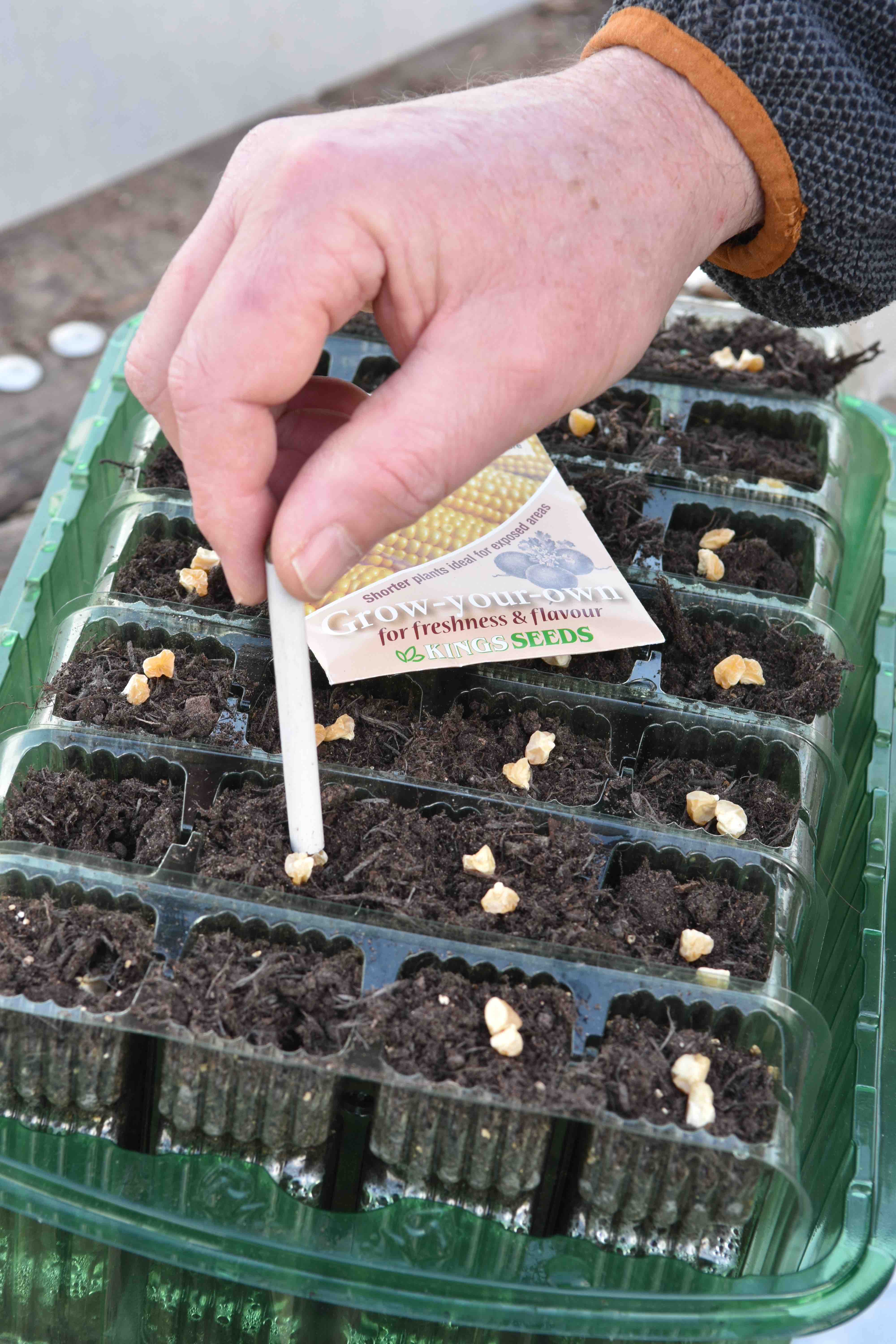
Traditional advice is to sow two seeds per cell in case not all seeds grow – if both grow one is pulled up – but F1 hybrid seeds are expensive and I can’t bear to waste them. So I often sow one per cell. Push the seeds in 1cm deep with a pencil and water them. Use multipurpose compost and keep the trays in about 21c and seedlings will appear in about two weeks.
It is important to grow them in bright light. If they are shaded they will get straggly and if the plants get to the stage where they need supporting they will have problems after planting out. When the plants are about 15-20cm high, and we are in early May, get the plants used to outside conditions by putting them outside during mild days and bringing them back in on cold nights. Place them in shade for a few days to get them used to direct light. This prevents bleaching and damage to the leaves.
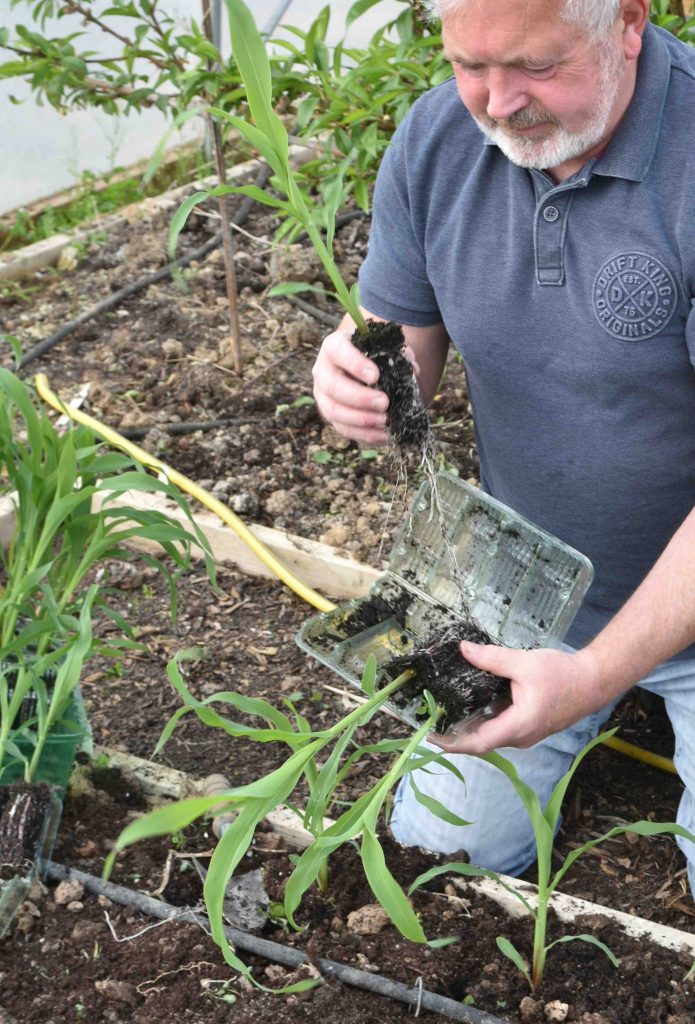
The roots should have filled the compost so when you plant them out the rootball remains complete. Plant them slightly deeper than in the seed pots because they produce ‘buttress’ roots at the base of the stem as they grow. Plant them about 40cm apart in all directions.
Then, all you need is patience and some sun and rain.
In recent years I have started growing sweetcorn in my poly tunnel. This is not essential and I used to think it was a waste of space but it means I get a first crop in July and then a second, outside, in August. When the plants are pulled up in the poly tunnel I can sow autumn and winter salads in the space.
Problems
The good news is that sweetcorn has few problems you are likely to experience. Cold nights can slow growth at the beginning and frost will kill them, so be careful. The main issue comes at harvest time. Rats and badgers will both devour your crops. Rats gnaw away the sheathes on the cobs and badgers will pull down the plants as they feed, making it look like a hurricane has passed through!
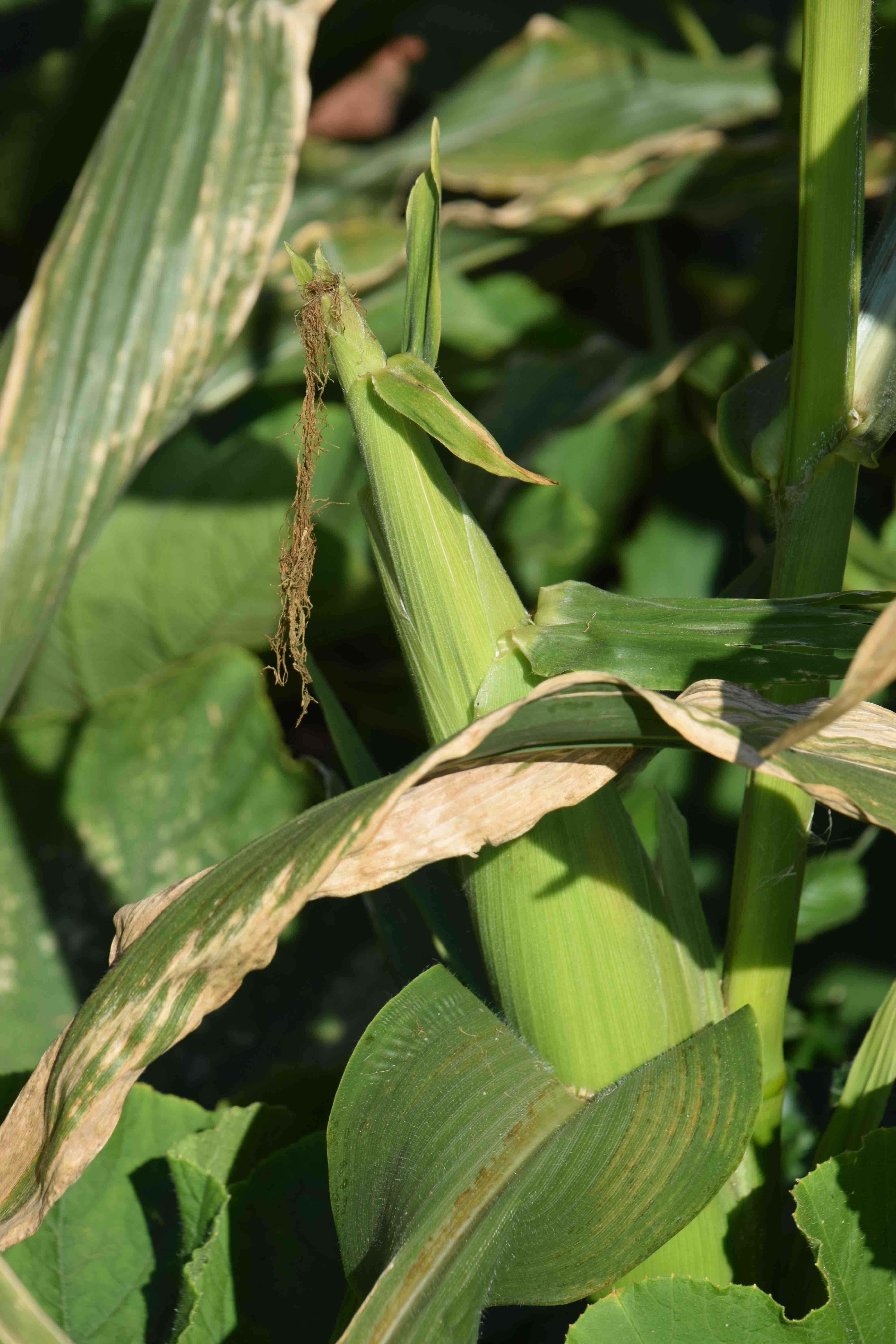
The only other problem is picking because sweetcorn is at its best for a short time and is best eaten as soon as possible after picking. When the ‘silks’ turn brown and shrivel and you can see the cobs are swollen, pull back the tips of the sheaths to reveal the top kernels and push your thumbnail into one. If the juice runs clear the cobs are not quite ready (or very over ripe) but if the juice is milky, get out the barbecue and the butter. Or eat them straight off the plant!
